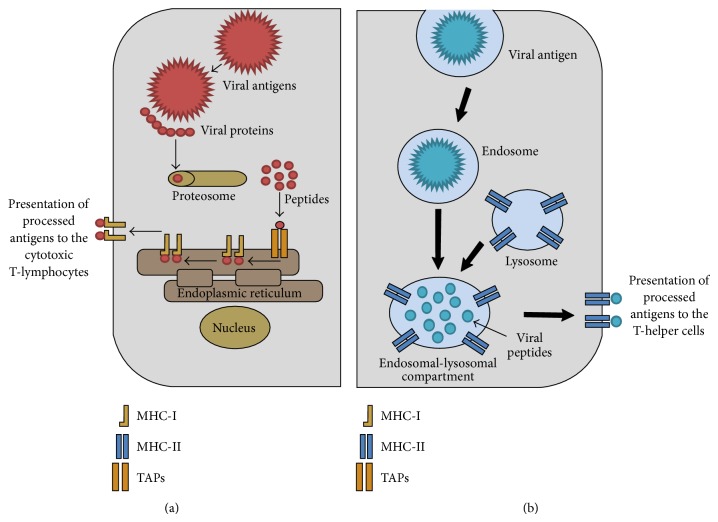Figure 1.
The endogenous and exogenous pathways of viral antigen entry into host cells. (a) Endogenous pathway shows viral antigens that enter the host cells by the intracellular route. Once internalized, the viral antigens are degraded into peptides by proteasomes. Thereafter, the processed antigenic peptides are transported via the transporter associated with antigen presentation (TAPs) to the endoplasmic reticulum (ER) where they are loaded onto MHC-I molecules for presentation at the cell surface to CD8+ T-cells. (b) Exogenous pathway shows antigens that enter the antigen presenting cells (APCs) via the extracellular route which results in internalization of the antigens in the endosomes. Thereafter, the endosomes fuse with the lysosomes to form the endosomal-lysosomal compartments that have MHC-II complexes. In the endosomal-lysosomal compartments, the antigens are degraded into peptides followed by packaging of the peptides onto MHC-II complexes. Thereafter, the MHC-II complexes carrying the peptides are transported to the cell surface for presentation of the antigenic peptides to the CD4 T-cells.

